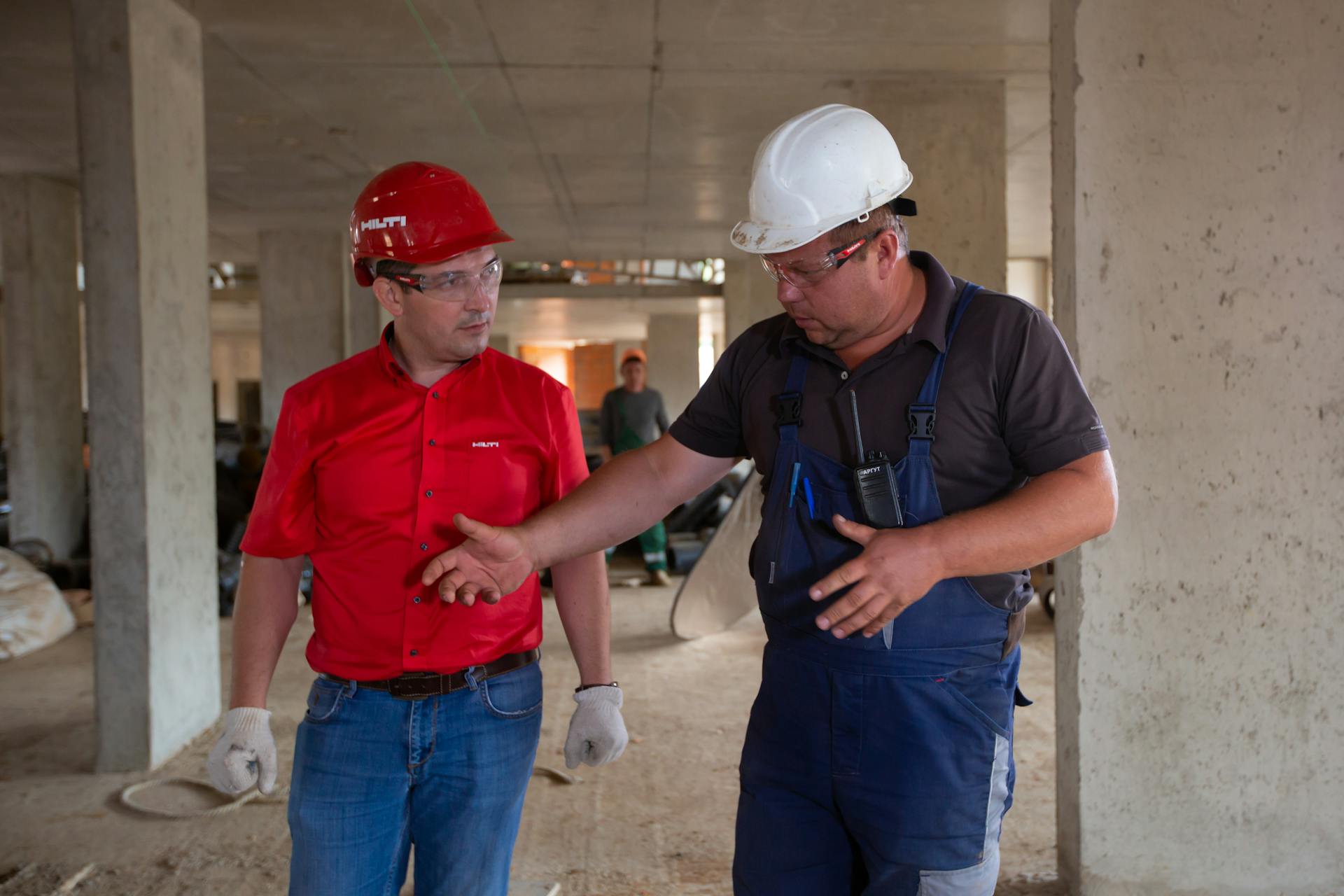In modern mining and construction, technical licences open the door, but soft skills keep you advancing. As automation takes over routine tasks and safety standards tighten, employers prize abilities machines can’t replicate: clear communication, teamwork, adaptability, resilience and more. With Australia’s resources sector facing labour shortages more than 50 per cent above pre‑pandemic levels, candidates who combine hard skills with strong interpersonal strengths are in highest demand. This deep‑dive guide covers the ten soft skills you must master to stand out on site, drive safety, boost productivity and accelerate your career trajectory.
1. Clear Communication
Why it matters: On any worksite open‑cut mine, underground operation or high‑rise build miscommunication costs time, money and can endanger lives. A 2023 RICS survey found that 82 per cent of project delays stem from communication breakdowns between trades and management.
Key practices:
- Active Listening: Give speakers your full attention. After key briefings, summarise back: “So you’d like me to inspect the conveyor motor at 2 pm and report any unusual vibrations?”
- Structured Reporting: Use concise formats such as SBAR (Situation, Background, Assessment, Recommendation). Example:
- Situation: “The water pump tripped at 10:15.”
- Background: “Pressure spiked above threshold over the last hour.”
- Assessment: “Likely impeller blockage.”
- Recommendation: “Isolate pump, flush lines and schedule maintenance.”
- Non‑Verbal Signals: In noisy or spread‑out sites, use standard hand signals, high‑vis clothing and direct line‑of‑sight positioning to reinforce your words.
Mini case study: At a coal mine in Queensland, handover errors led to a belt restart without lock‑out verification, and a minor injury. After introducing “repeat‑back” drills and SBAR reporting, similar incidents fell by 40 per cent in two weeks.
2. Teamwork & Collaboration
Why it matters: Complex projects rely on seamless cooperation among engineers, tradespeople, safety officers and supervisors. A survey of 500 construction firms revealed that high‑collaboration teams completed projects 20 per cent faster and had 15 per cent fewer safety incidents.
Best practices:
- Daily Huddles: Kick off with a five‑minute stand‑up to align on objectives, hazards and resources.
- Role Recognition: Publicly acknowledge contributions, “Thanks, Jess, for securing those scaffold boards on time.”
- Shared Problem‑Solving: When a material delay threatens the schedule, gather the crew for a quick brainstorm: What alternative suppliers or workarounds exist?
3. Problem‑Solving & Critical Thinking
Why it matters: Unplanned issues, equipment failures, weather delays or supply chain hiccups are the norm. Organisations investing in critical‑thinking training report a 25 per cent reduction in unplanned downtime.
Core steps:
- Root‑Cause Analysis (“5 Whys”):
- Why did the pump fail? Impeller blockage.
- Why blockage? Infrequent filter changes.
- Why infrequent? No schedule.
- Why no schedule? Process gap.
- Why gap? No assigned ownership.
- Brainstorm Options: List fixes (flush filters, assign a schedule, install sensor alert), weigh safety/time/cost.
- Implement & Debrief: After resolution, hold a 10‑minute “hot wash” to document lessons and update SOPs.
Infographic suggestion: A “5 Whys” flowchart mapping from symptom to systemic solution.
4. Adaptability & Flexibility
Why it matters: Sites evolve, design changes, roster shifts or emergency repairs demand agility. In mining shutdowns, workers who pivot smoothly are first offered repeat contracts.
How to build it:
- Growth Mindset: View change as a chance to learn. If assigned to unfamiliar machinery, pair with an experienced operator and ask questions.
- Cross‑Training: Sign up for short modules (confined‑space rescue, forklift operation, basic electrical fault‑finding).
- Volunteer: When a new task emerges, say, stocktaking or equipment tagging, raise your hand.
On‑site exercise: Once a month, spend half a day shadowing an adjacent role. Log three new observations and share them in the next team meeting.
5. Time Management & Organisation
Why it matters: Efficient scheduling keeps tight rosters on track. Firms with robust time‑management systems complete projects up to 20 per cent faster and save 10 per cent on overtime.
Techniques:
- Nightly Planning: Dedicate five minutes each evening to list your top three priorities for tomorrow.
- “Urgent vs Important” Matrix: Categorise tasks to decide what to tackle now, what to schedule and what to delegate.
- Real‑Time Logging: Use approved mobile tools to record hours, incidents and progress immediately rather than retrospectively.
6. Attention to Detail
Why it matters: Small errors, misaligned measurements, skipped PPE checks, can cascade into serious incidents or expensive rework. A civil works audit found that crews using structured checklists saw a 30 per cent drop in defects.
Strategies:
- SOP Adherence: Read procedures aloud before critical tasks, welding sequences, torque settings or lock‑out/tag‑out steps.
- Peer Verification: For high‑risk tasks, work in pairs: one executes, the other verifies each step.
- Photographic Logs: Photograph completed stages (e.g. bolt torque readings, weld seams) with timestamps and store centrally.
7. Leadership & Initiative
Why it matters: Leadership can spring from anyone taking initiative. Sites promoting grassroots leaders fill foreman and supervisory roles up to three times faster.
How to demonstrate it:
- Toolbox Talks: Volunteer to run brief daily safety huddles. Prepare a five‑minute topic, perhaps “hazard spotting in low‑light conditions.”
- Mentoring New Starters: Pair with a newcomer for their first week; guide them through site protocols and safety procedures.
- Innovation Pitches: Identify a workflow bottleneck—maybe cluttered material staging—and draft a concise suggestion with clear benefits. Present it to your supervisor.
8. Stress Management & Resilience
Why it matters: Extended rosters, remote camps and high‑risk tasks heighten stress. A 2024 Occupational Safety & Health Journal study found that stress‑management workshops reduced errors by 25 per cent in mining crews.
Key practices:
- Micro‑Breaks: Every 60–90 minutes, pause for deep‑breathing exercises or light stretching. Set a timer if needed.
- Peer Debriefs: At shift end, spend five minutes sharing successes and frustrations with a colleague to normalise stress conversations.
- Off‑Duty Boundaries: Once off‑shift, silence work messages; engage fully in rest or leisure.
9. Cultural Awareness & Inclusivity
Why it matters: Modern worksites unite diverse cultures and languages. Culturally competent teams enjoy 40 per cent higher retention and fewer grievances.
Building inclusion:
- Respectful Language: Avoid idioms or slang that may confuse non‑native speakers; use clear, simple terms.
- Cultural Briefings: Host fortnightly “culture corners” where teammates share one custom or phrase from their background.
- Inclusive Dialogue: In toolbox talks, invite input from everyone, encourage quieter team members to speak up.
10. Safety Awareness & Compliance
Why it matters: A strong safety culture flows from both procedures and interpersonal vigilance. Sites prioritising safety communication report 30 per cent fewer incidents annually.
Action steps:
- Proactive Walk‑Throughs: Before each shift, walk the site with fresh eyes. Note and report any new hazards.
- Peer Prompts: If you notice incorrect PPE, offer a polite reminder “Mind if I check your goggles?” – to reinforce good habits.
- Regulation Mastery: Read and summarise site‑specific safety manuals, then share key updates during daily huddles.
Bonus Resources & Next Steps
- Download the Soft Skills Toolkit: A one‑page PDF packed with exercises, checklists and reflection prompts to sharpen each of the ten skills.
- Related Reading:
- How to Write a Winning CV for Blue‑Collar Roles
- Top 5 Certifications to Boost Your Industrial Career
- Achieving Work‑Life Balance in FIFO & Shift Work
- Stay Updated: Subscribe to our newsletter for weekly site‑ready tips, case studies and safety insights.



